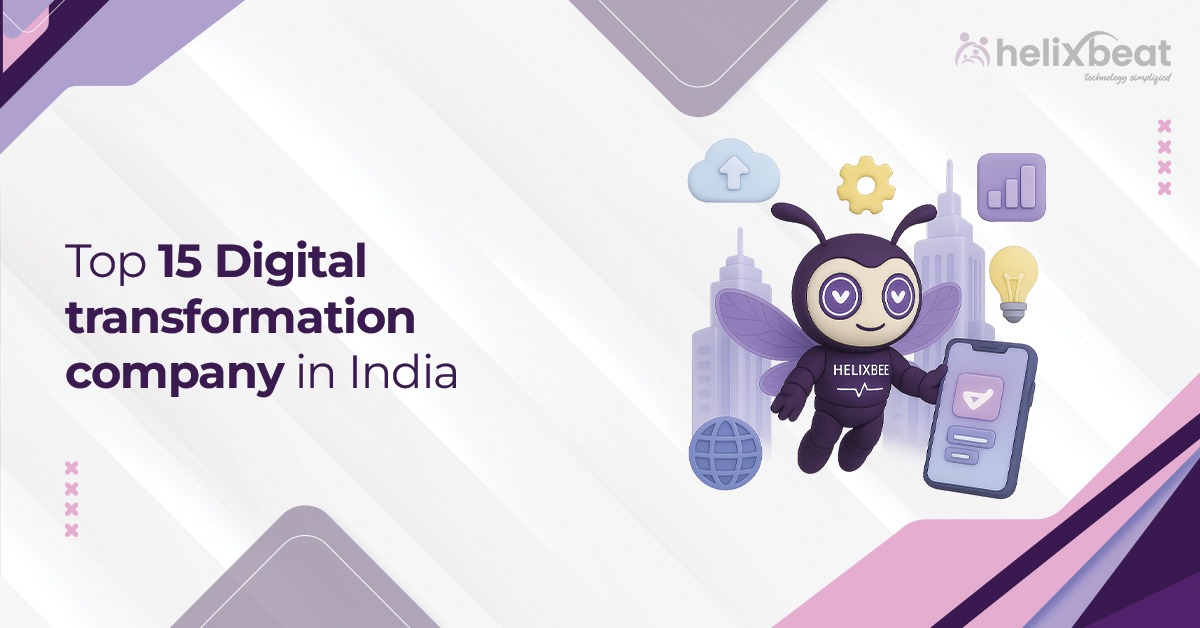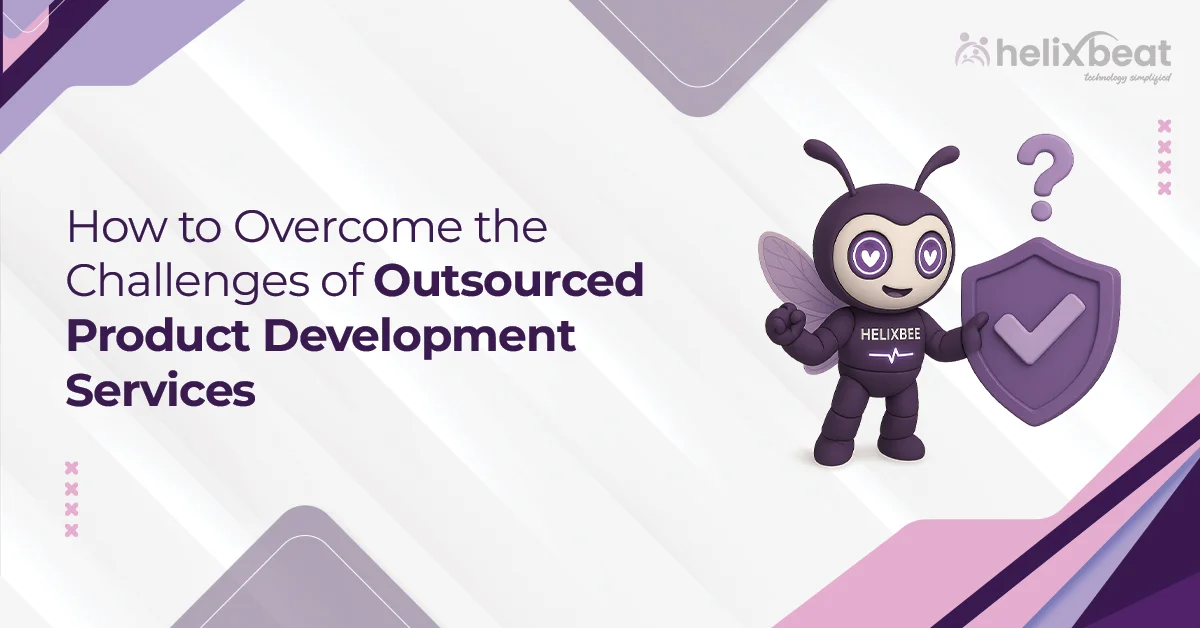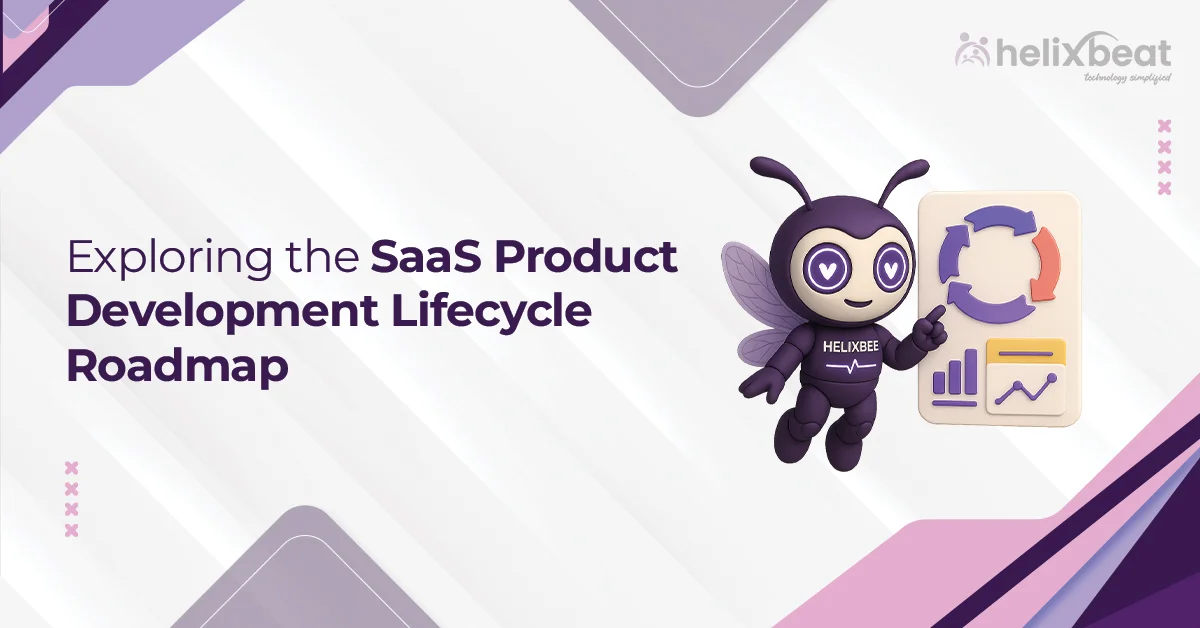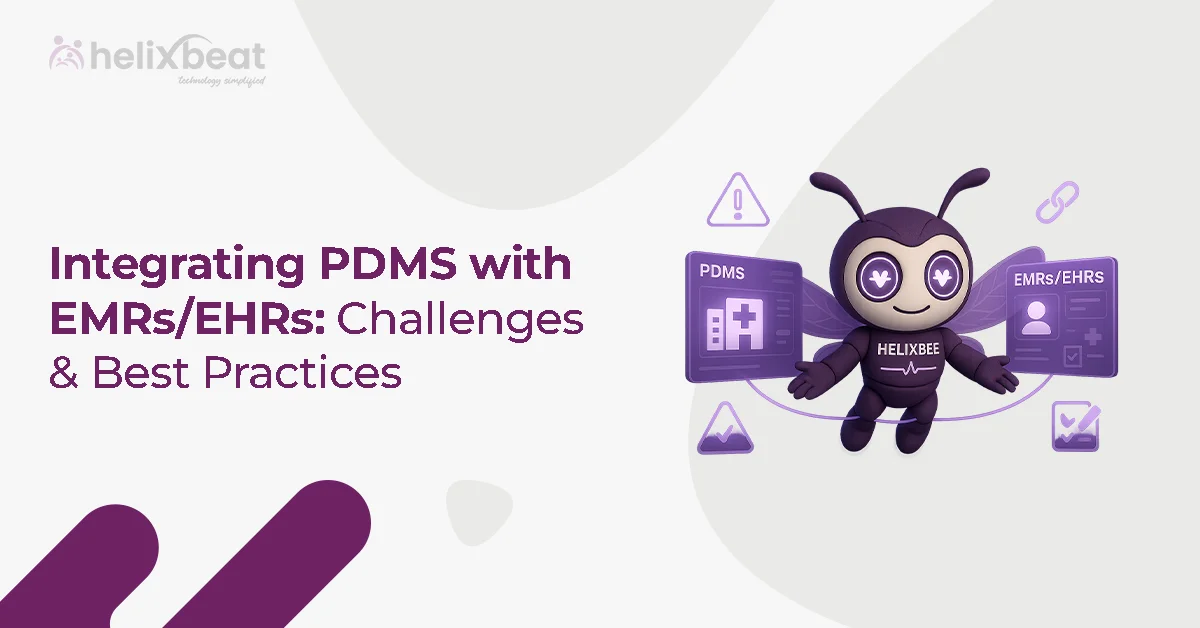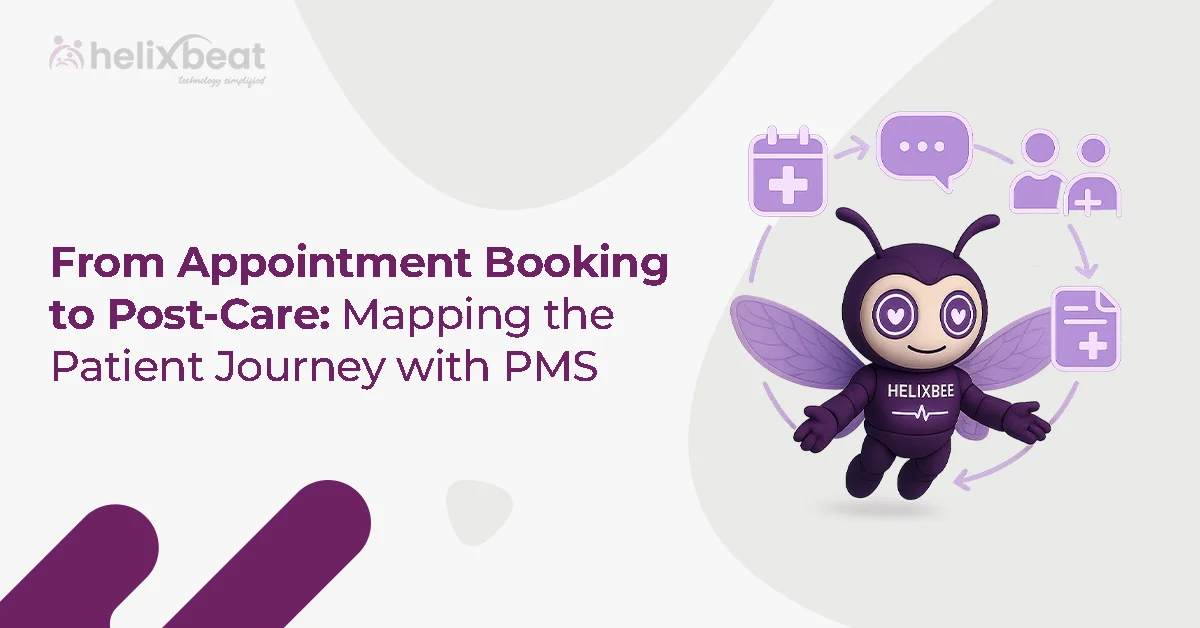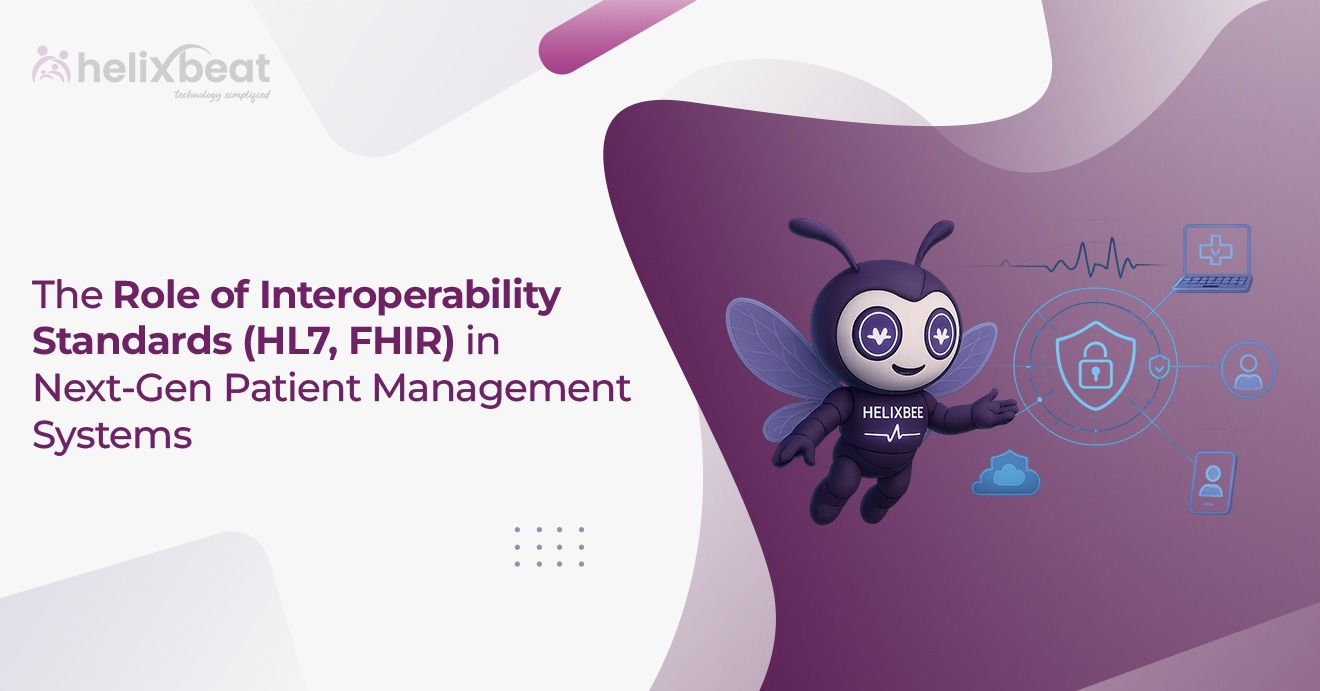Every day, healthcare organizations generate a massive amount of patient data—but having data isn’t enough. The real challenge is making it work across different systems, formats, and platforms. Electronic Health Records (EHRs) often speak different “languages,” which creates roadblocks for seamless data exchange. This is where Fast Healthcare Interoperability Resources (FHIR) based solutions like AERIS connect fragmented systems and facilitate smooth data sharing.
If you want to improve data interoperability in healthcare, here are five important tips to effectively manage EHR platforms.
Table of Contents
1. Leverage FHIR Standards for Seamless Data Exchange
Unlike the outdated HL7 V2 and V3 frameworks, FHIR is built for the modern digital era, employing a RESTful API approach that simplifies data exchange across diverse EHR systems.
At the heart of AERIS lies HL7 FHIR—the globally recognized healthcare interoperability standard. By structuring data in a universally accepted format, AERIS eliminates the confusion caused by incompatible systems. Whether it’s electronic health records (EHRs), lab reports, or imaging data, information moves fluidly between platforms and reduces the bottlenecks.
2. Map and Standardize Data Across EHR Systems
With healthcare organizations relying on multiple EHR platforms, exchanging information without hiccups requires a unified approach to data formatting. Differences in terminology, structures, and workflows often lead to inconsistencies, making data integration a challenge.
How AERIS Brings Consistency to Healthcare Data
- Speak the Same Language: AERIS uses standard code sets like SNOMED CT (for clinical terms), LOINC (for lab results), and RxNorm (for medications) to create a common vocabulary that different systems can understand.
- Bridge the Gaps with Data Mapping: AERIS transforms proprietary formats into a universally recognized structure using FHIR resources and helps harmonize information across platforms.
- Keep Data Clean and Reliable: AERIS implements validation rules to filter out errors so that only high-quality, accurate data flows between systems.
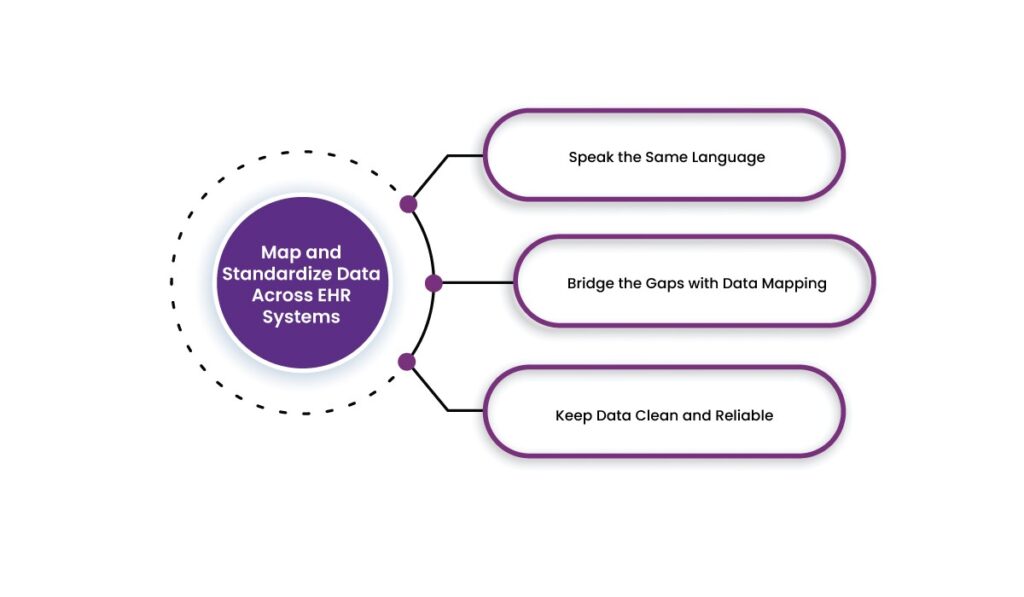
3. Leverage API-First Architecture for Data Exchange
Modern healthcare ecosystems demand API-first architectures that prioritize seamless communication between different EHRs, third-party applications, and healthcare devices.
Why the API-First Approach in AERIS Works
- Scalability: Allows systems to integrate new data sources without major reconfigurations.
- Real-Time Data Flow – Immediate access to critical information enhances decision-making, reduces delays, and empowers providers with up-to-the-minute insights.
- Built-in Security and Compliance – Robust authentication protocols like OAuth 2.0 and OpenID Connect help protect sensitive health data while keeping access controlled and streamlined.
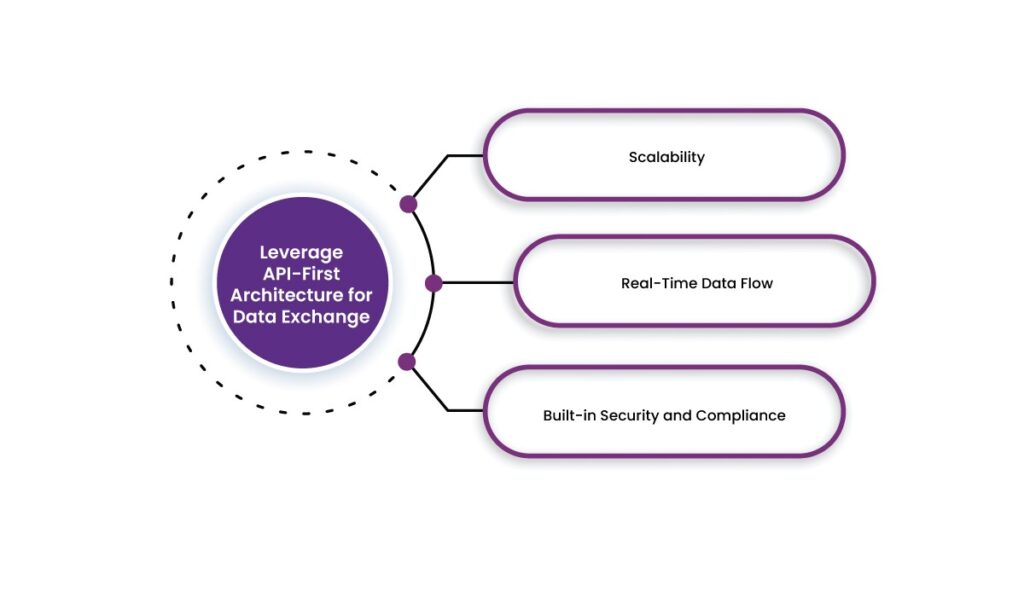
4. Implement Data Governance Policies
Healthcare interoperability isn’t just about technology; it also involves policies and compliance measures. Therefore, implementing strong data governance frameworks ensures consistency, security, and regulatory adherence across healthcare systems.
How AERIS Safeguards Data and Upholds Compliance
a. Encryption
AERIS employs cutting-edge encryption techniques like AES and TLS to keep healthcare data secure—whether it’s being transmitted or stored. By converting information into unreadable formats, the platform blocks unauthorized access and maintains data confidentiality at every stage.
b. Access Control
With role-based and context-aware access policies, AERIS restricts system interactions to authorized personnel. Permissions are assigned based on responsibilities, while factors like time, location, and device further refine access, tightening security without compromising usability.
c. Audit Trails
Every user action is logged, creating a detailed record of system activity. These audit trails provide transparency, support investigations, and reinforce accountability, helping organizations maintain operational integrity.
d. Regulatory Alignment
AERIS follows HIPAA standards and helps healthcare providers manage patient data responsibly. By integrating compliance into its core framework, the platform reduces regulatory risks and promotes secure, ethical data handling.

5. Use AI and Machine Learning for Interoperability Optimization
AI and machine learning can significantly enhance healthcare interoperability by automating data transformation, detecting anomalies, and optimizing workflow integrations.
AI-Driven Approaches
- Automated Data Mapping: AI can standardize data by automatically converting different formats into FHIR-based resources.
- Predictive Analytics: Helps identify patterns and reduce discrepancies in healthcare data.
- Natural Language Processing (NLP): Extracts structured data from unstructured clinical notes, improving interoperability.
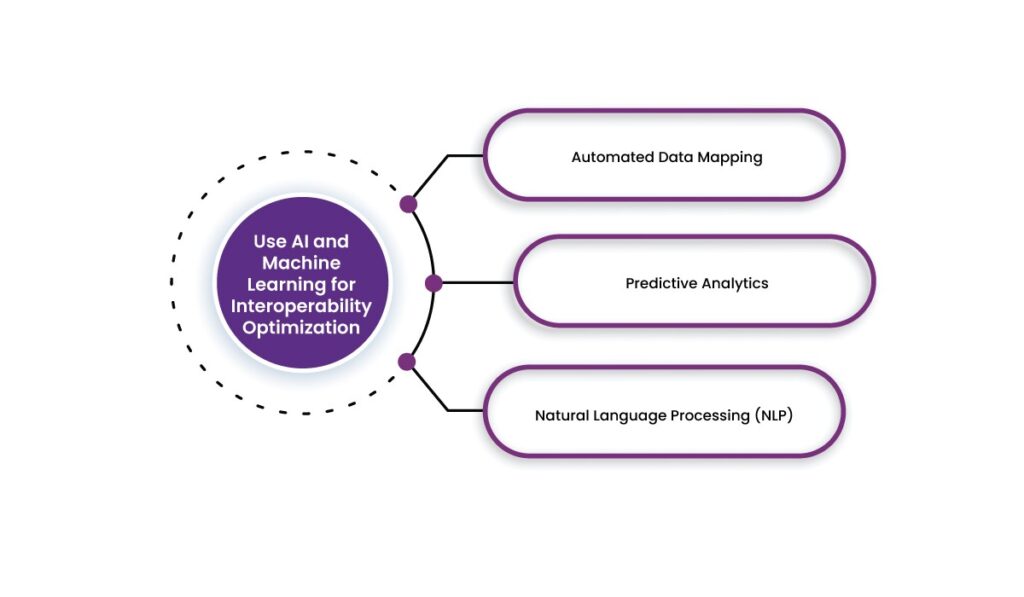
Final Words | Data Interoperability in Healthcare
Managing healthcare interoperability requires a strategic approach that combines FHIR standards, API-first design, robust data governance, and AI-driven optimizations. By adopting these best practices, healthcare organizations can enhance data accessibility, reduce errors, and improve patient outcomes.
As interoperability continues to evolve, leveraging solutions like AERIS will remain a cornerstone of efficient and secure healthcare data exchange. Whether you’re a healthcare provider, IT professional, or policymaker, implementing these five tips can help you navigate the complex landscape of healthcare interoperability with greater success.
FAQs
1. What is healthcare interoperability and why is it important?
Healthcare interoperability refers to the ability of different electronic health record (EHR) systems, applications, and platforms to exchange and use patient data seamlessly. It improves care coordination, reduces medical errors, and enhances decision-making for healthcare providers.
2. How does FHIR improve healthcare interoperability?
Fast Healthcare Interoperability Resources (FHIR) is a modern standard that simplifies data exchange between EHR systems using a RESTful API approach. It structures data in a universal format, reducing compatibility issues across platforms.
3. What challenges do healthcare organizations face in achieving interoperability?
Common challenges include differences in data formats, lack of standardized terminology, security concerns, regulatory compliance requirements, and integration complexities between legacy and modern systems.
4. How does AERIS help standardize healthcare data?
AERIS uses HL7 FHIR-based data structuring and standardized code sets like SNOMED CT, LOINC, and RxNorm to create a common language for healthcare systems, enabling smooth data exchange.
5. Why is an API-first approach beneficial for healthcare interoperability?
An API-first approach allows healthcare systems to integrate with multiple platforms, applications, and devices without extensive reconfiguration. It enables real-time data sharing, scalability, and enhanced security.
6. What role does data governance play in healthcare interoperability?
Data governance establishes policies for data accuracy, security, and regulatory compliance. It helps organizations maintain structured, error-free, and accessible patient records while meeting industry standards like HIPAA.
7. How does AERIS enhance security in healthcare data exchange?
AERIS integrates encryption techniques (AES, TLS), role-based access control, audit trails, and compliance measures to protect sensitive patient data while allowing controlled access to authorized users.
8. What are the key benefits of using FHIR-based solutions like AERIS?
AERIS simplifies data sharing, enhances data accuracy, reduces manual errors, supports compliance with healthcare regulations, and improves patient care by enabling seamless access to medical records.







